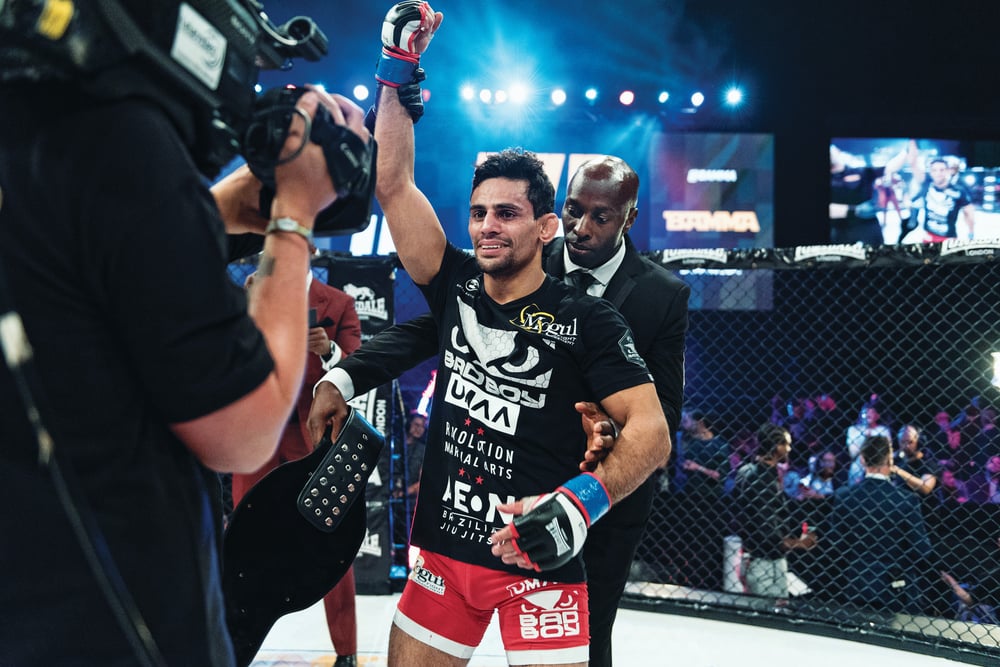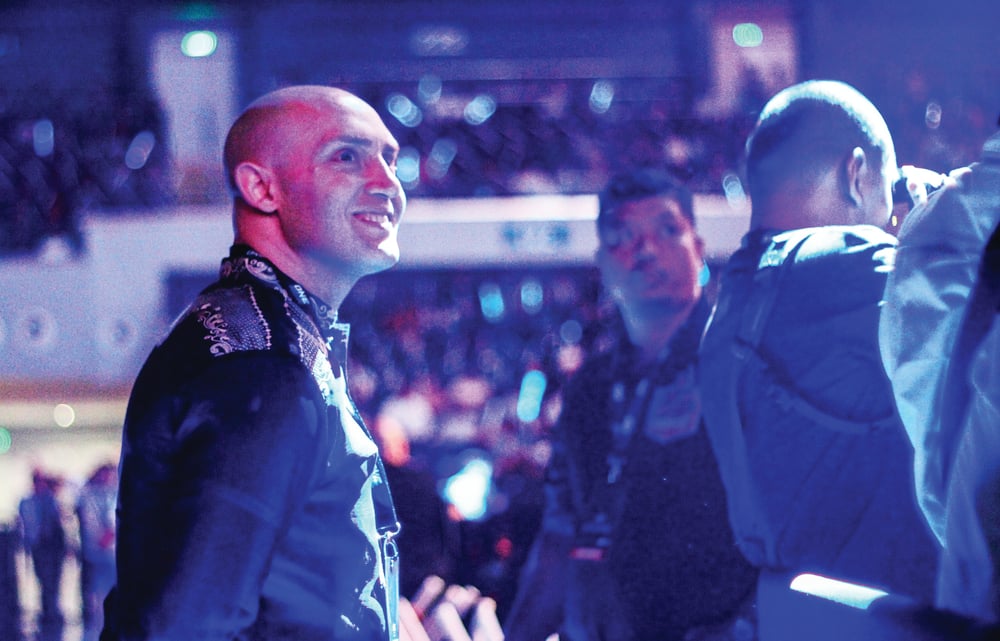
Issue 164
February 2018
Everyone sees what goes on under the lights on fight night ... but there's a lot more work going on to deliver what you see before, during and after an MMA event
If the public doesn’t engage with what’s going on in an organisation, it’s never going to get off the ground. You can have the most exciting fights, but unless the masses are inspired to care about the product that’s put out there, athletes will end up competing for nothing. That’s Loren Mack’s job as VP of public relations and communications for ONE Championship. He explains that by magnifying the brand of the organisation, the Asian people have invested in it and made it the largest sports media property on the continent.
The way to do that, and help turn the general public into fans who are willing to spend their time and money on MMA, is with a two-step approach. Step one: blow them away with the live-show experience.
“You want to create the greatest show for the fans of the sport and those attending for the first time,” he says. “That’s how you’ll grow your fanbase in all these cities. When you bring Las Vegas-style entertainment to the heart of Asia and people have never experienced that, they’re going to be hooked on the rush of adrenaline from being in such an action-packed building. Eventually, they all convert to martial arts fans.”
Just don’t underestimate what it takes to plan and execute a bombastic live MMA show. “Don’t ever think things will run according to plan,” Mack adds. “What can go wrong, will go wrong, so you’ve got to be prepared for that… I can’t tell you how many times I’ve had problems with LED screens. There always seems to be an issue.
When there’s an issue with technology, it sucks!” That big-event feel is not just important on fight nights. It’s also an essential part of the pre-fight hype to give fans a taste of what’s in store and build momentum all the way up until the moment the announcer introduces the first names on the undercard.
Mack explains: “When I do an open workout, I make sure it’s magnificent. I did one with Aung La N Sang with 5,000 people on three floors of a mall. If you heard about that event, you’re going to tell your friends and you’re going to be there. It’s a chain reaction.”

Step two of the building process is to create heroes the fans can cheer for, “the sweet sauce” according to Mack. The ONE philosophy is for its athletes to inspire people. It tells their inspirational stories – many have overcome extreme adversity to become champions – and emphasizes how they possess the Asian values of integrity, humility, honor, respect, courage and discipline. That resonates with the martial arts fans in Malaysia, Cambodia, Indonesia – anywhere in their part of the world – and just about everyone else.
“I work very hard on telling the story of our athletes,” explains Mack. “That attracts different crowds. You have the hard-core fans that come to press conferences and open workouts, but when you’re telling a human-interest story, you’re hitting the mainstream. They might be interested from a lifestyle standpoint, a self-defense standpoint or a CSR standpoint. The more stories you can generate on the TV, web, radio, the bigger the net you’re going to cast and the more people want to check it out.”
That’s another important piece of the puzzle – getting those stories out there. That involves engaging with the press in many different markets, all with differing attitudes and levels of exposure to mixed martial arts. In some nations that have little history of major MMA shows, part of the process is education about the sport, but one thing that they all have in common is that they love local stories. The Malaysian media wants to cover fighters from Malaysia just like the Singaporean media wants to dedicate column inches to fighters from Singapore.
Once publications are interested, the goal is to make the process as pain-free as possible so they come back for more. “My media doesn’t wait,” Mack says. “Ultimately, I’m in the hospitality business. If you need a photo or more information, my team will be in touch within 24 hours – or even within an hour. We ensure they have everything they need to do the greatest story you can do.” That includes access to fighters, who are happy to make time for an interview at almost any time. It also includes access to the ONE CEOs, Victor Cui and Chatri Sityodtong, who are front and center when major state and international media comes calling (CNN, Forbes, BBC), often to speak about the business side of things. That means Mack has the perk of being able to tell his boss when he has to fit some time into his schedule for the good of the promotion.
“Oh yeah,” he laughs. “That 5am interview man, you’ve got to do it!'

All of the coverage that’s generated, combined with a tidal wave of social media play into a promotional strategy to keep fans informed with content for every show that starts three months out and builds towards a huge event week. Packed arenas, big ratings and an exponential growth in social media impressions show that it’s worked. So too, does the profile of its biggest stars.
In ONE’s core markets some of the athletes transcend the niche appeal that MMA has in most of the world and have become some of their nation’s biggest stars in any sport. Middleweight champion Aung La N Sang is the national hero in Myanmar. Angela Lee makes the front page of Singapore’s national paper. And they are both – like most of the rest of the ONE roster – celebrated for all the right reasons. That’s Mack’s ultimate goal and the most satisfying part of the job,
“We have Aung La representing an entire nation and every single person from every walk of life knows him,” he says. “I’ve seen fans dream big after watching Angela Lee capture a title. I really love that we focus on the core values of martial arts. I have two daughters: there’s no one else I’d rather they look up to than Angela Lee.”
...









